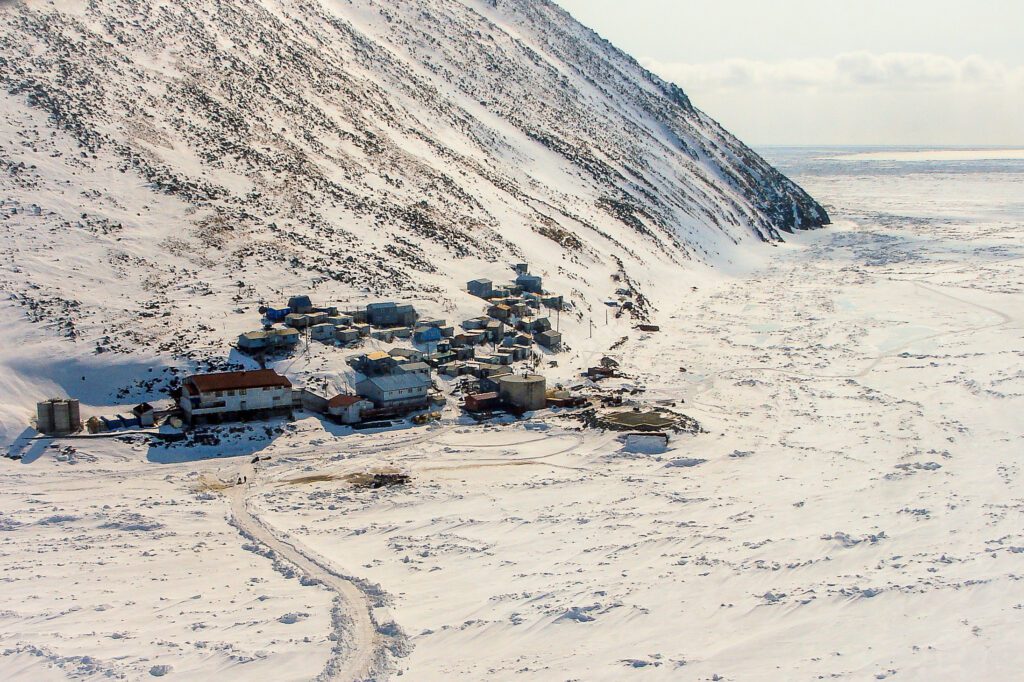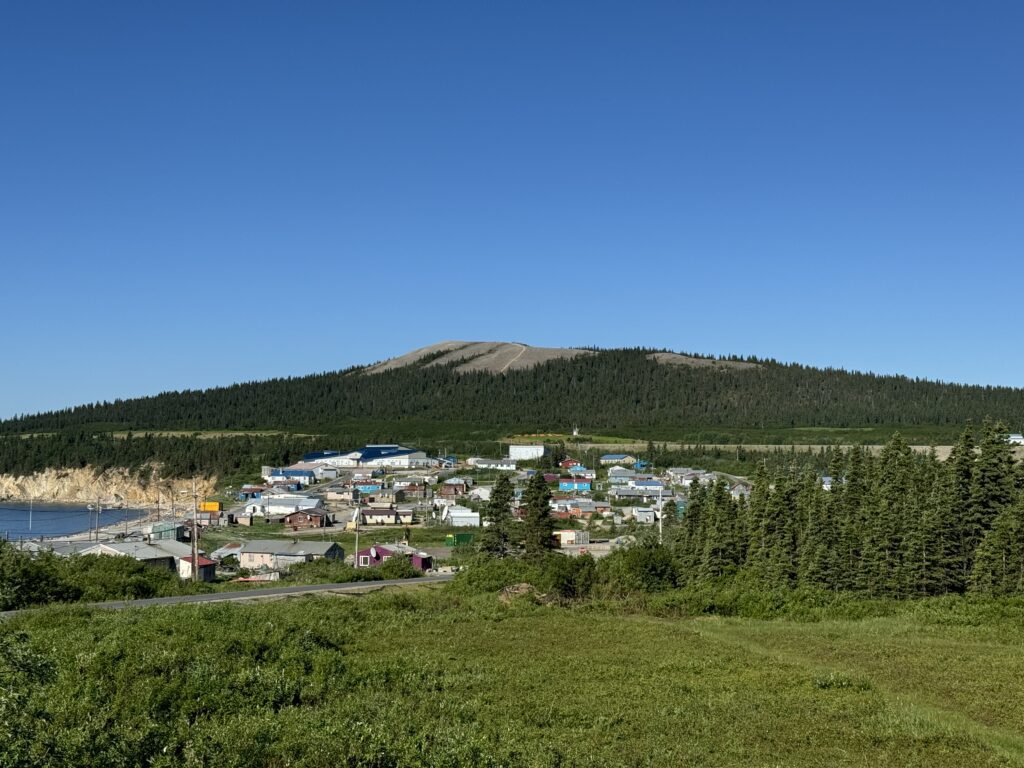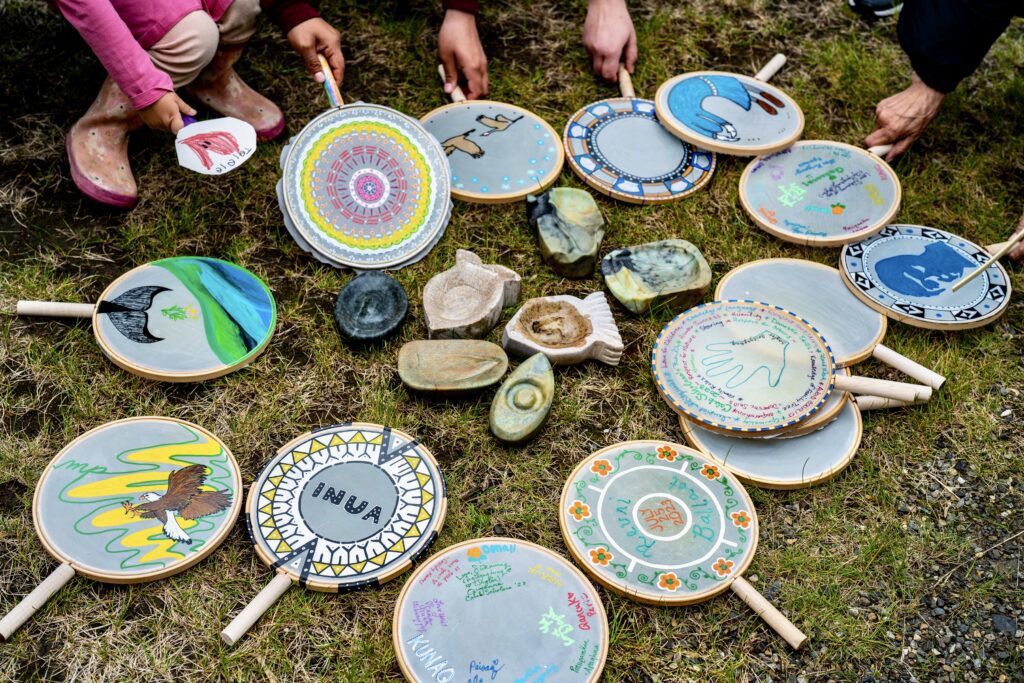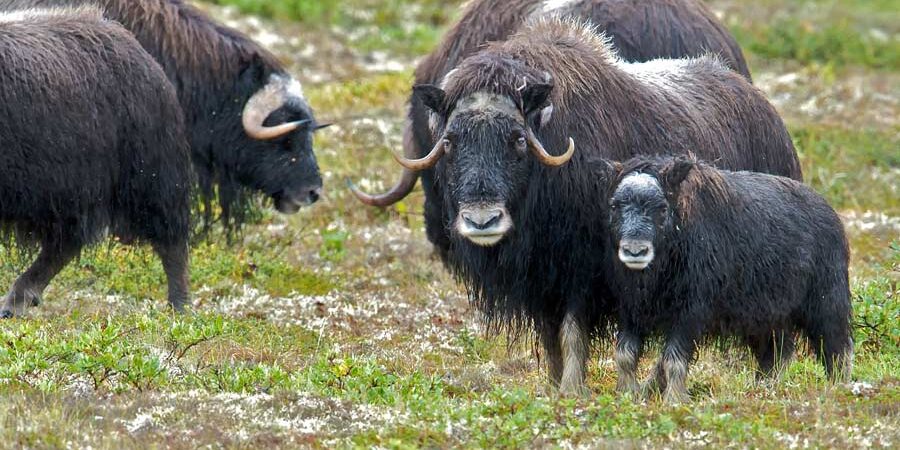A Nome woman has been cited with killing a muskox, the latest in Nome’s increasingly common “nuisance muskox” problem.
Nome resident Diana Adams, 59, was cited by an Alaska State Wildlife Trooper on Tuesday for taking a muskox out of season on July 17 in Icy View. In an email, Adams wrote she has “been charged with the illegal taking of game” and has no comment.
But herds of muskox remain close to town, uncomfortably close for some, and wildlife officials have been scrambling all summer for a solution. The animals have damaged property, injured and in some cases killed pets, and threatened some residents. Current estimates put about 150 animals within seven miles of Nome. With deterrents ranging from rubber bullets to bear decoys to bear urine, the question remains: have any of them worked?
“I would say the short version of that is, they haven’t,” admits Tony Gorn, the wildlife biologist for the Alaska Department of Fish and Game in charge of the Unit 22(C) area around Nome.
Gorn said the first call for help related to problematic “urban muskox” came in May, months earlier than in prior years. With precautions failing to change the animals’ behavior, Gorn said the best strategy so far has been moving the herds on a case-by-case basis.
“We’ve been diligently moving muskox groups when people call us,” he said. “We go out and we move the herds away from the backyard, or the airport, or wherever the case might be.”
Fish and Game is also tackling the problem by moving up the limited subsistence hunt for the iconic arctic animals. The opening for five bulls now starts August 1, five months early.
“There’s been members of the public that expressed interest to hunt some of the animals close to town, and we had the regulatory flexibility to make that change,” Gorn said. “There’s no chance of over-harvesting” he said, referring to the Tier II subsistence hunt that, at least in the area immediately around Nome, is limited to bow and arrow, shotgun, and muzzeloaders, “so, you put all those things together and it seems like a reasonable change to make.”
But Gorn said the early hunt and the increasingly vocal complaints from Nome residents about muskox close to town misses the bigger picture of decline in the Seward Peninsula population, which is diminishing by about 13 percent annually. With high natural death rates and fewer calves surviving into a second year, Gorn said the hunt may be opening earlier but will remain limited to just five bulls.
“We still have to be conservative with our harvest rates because we don’t want to overharvest the population,” he said.
Overall, Gorn said the problem isn’t too many muskox. In fact, he said the muskox population grew steadily for 30 years, reaching a peak of around 2,800 animals. Even with more animals at the time, Gorn said there were fewer incidents of urban muskox around Nome. Though the data isn’t complete, Gorn said the problem is likely predators that muskox deem a bigger threat than humans.
“The challenge is going to be, for our deterrents, is: we have got to find a deterrent that is even more unpleasant to groups of muskox than being chased around by a bear or wolf,” Gorn said.
“And, frankly, and I’m not sure what that’s going to be.”
Fish and Game is still looking for solutions to keep muskox out of town. While harvesting more of Nome’s urban muskox may be off the table, aiming that effort at predators that could be keeping the animals in town could let hunters help in a different way: Gorn reminds hunters the brown bear season opens in Unit 22(C) August 1.
Editor’s Note: a version of this story appeared online with a headline and subhead that referenced the “illegal” killing and taking of a muskox. The above article reflects changes that leave the question of legality of the kill to the courts.







